- Home
- Alison Weir
The Lost Tudor Princess Page 20
The Lost Tudor Princess Read online
Page 20
However, when Queen Mary brought Katherine Grey, Lady Jane’s sister, to court, granted her a handsome allowance and treated her and her hunchbacked younger sister Mary with great favor, people began to speculate that the Queen might choose Katherine as her successor. Of undoubted legitimacy, she had been reared as a Protestant, but now, unlike Elizabeth, she was willing to convert to the Roman faith. Many Catholics voiced their opinion that they would prefer Katherine to the other Catholic heiresses, Margaret and Mary, Queen of Scots, because they feared the intervention of the Scots and the French in English affairs.
Soon, however, Margaret had another crown in view. Since the peace of 1551, Scotland had witnessed a power struggle between Châtelherault and Marie de Guise for the regency. Châtelherault was a spent force, and real power now lay in the hands of the Queen Dowager, although that was not apparent to outsiders, for on April 3, Renard assured the Emperor that Châtelherault was “daily gathering strength against the Queen Dowager, and is resolved not to allow the French to get the upper hand in the kingdom.” But Queen Marie, “feeling her own weakness,” had exploited the feud between Châtelherault and Lennox to her own ends, proposing to Lennox that, if he wished to return to Scotland and support her, she would have his property restored to him and treat him as befitted his rank. Thus she hoped “to gain him over to the party hostile to the Regent, as he is an important personage and has some chance of succeeding to the Scottish crown.”23
Lennox had now been an exile in England for almost ten years and was naturally eager to return to Scotland and recover his honors and estates. Anticipating the fulfillment of his ambition to be acknowledged as the Queen of Scots’ heir presumptive, he began scheming accordingly. In this he had the Queen of England on his side, for rather than have a pro-French party in power in Edinburgh, and the young Queen in the clutches of the French, she much preferred the prospect of a Catholic ruler who was married to her beloved cousin and friendly to England. That would be advantageous to Spain as well, France and Spain being established enemies. Mary wanted Lennox to go to Scotland and secretly enter into communications with Châtelherault against the Queen Dowager, with a view not only to driving her from the country, but to making himself king if possible, and throwing Scottish affairs into confusion. “If he is able to do this, the Queen will help him with money, to the best of her ability.”24 Such was the depth of his ambition that Lennox was prepared to intrigue with his enemy, Châtelherault, against the woman who was ready to receive him back into favor.
But that April, Marie de Guise, offering huge financial inducements, persuaded Châtelherault to step aside and assumed the regency of Scotland herself. With French influence restored, it seemed for a time as if the country would remain Catholic, although the tide of Protestantism was sweeping in stealthily. Determined to stem that, Queen Marie immediately revived Scotland’s ancient alliance with France, and strengthened her position by importing French advisers and French troops. But this served only further to alienate the proud, independent Scots, who already feared that their country would become a satellite state of France. Since Lennox was hated in Scotland, and the Queen Regent’s policies were proving unpopular enough, she could not afford to show favor to one who was widely reviled as a traitor; and as Lennox was now unable to go to Scotland, Queen Mary’s plan also came to grief.
—
On July 25, 1554, Queen Mary was married to Philip of Spain in Winchester Cathedral, amid great splendor. Margaret, as the chief lady of honor, bore the train of the Queen’s magnificent cloth-of-gold wedding gown, assisted by Elizabeth Capel, Marchioness of Winchester; together they walked behind her in procession from Wolvesey Palace to the cathedral, entering at the great west door. William Paulet, now Marquess of Winchester, gave the bride away, then “all the people gave a great shout, praying God to send them joy.” When the wedding ring was “laid upon the book to be hallowed,” Philip also laid there “three handfuls of fine gold,” symbolizing his worldly goods, whereupon Margaret opened the Queen’s purse and Mary, smiling, placed them in it. The trumpets sounded, the royal couple’s titles were proclaimed, and then Mary, her new consort, and their guests walked to Wolvesey Palace for a magnificent feast.25
Margaret remained at Winchester with Mary and Philip and the court until July 31, then moved with them to Windsor, Richmond and Suffolk Place in Southwark before the Queen and her new King made their state entry into London on September 18, passing in procession through streets packed with crowds and enlivened with tableaux and pageants, to Whitehall Palace.26
After the wedding Mary had given Margaret more jewels, money and plate.27 Thereafter Margaret served as the Queen’s chief gentlewoman and keeper of her privy purse. She was pregnant at the time of Mary’s wedding, and when her third son was born, probably in the winter of 1554–55, she named him Philip in honor of the new King.28 In 1565 a portrait of Mary I with Philip of Spain was on display in the great chamber at Temple Newsam.29
—
Margaret was one of several aristocrats who patronized Mary’s favored painter, Hans Eworth,30 and in 1555 she commissioned him to paint a portrait of the nine-year-old Lord Darnley,31 inscribed Aetatis IX, MDLV Henricus Stuardus Dominus Darnley.32 Eworth was to paint Darnley at least twice, and one of these works may have been the portrait recorded at Temple Newsam in 1565.
Time would show just how much Margaret adored her oldest child, and Lennox later wrote of “the paternal love and steadfast affection he bare unto his dear son Henry”; always, fatally, he saw him as an “innocent lamb.”33 The Lennoxes’ ambitions were now invested in Darnley, a handsome boy, tall—he grew to be six foot three—and fair; one ambassador said that “it was not possible to see a more beautiful prince.” In being fiercely ambitious for her son, Margaret was typical of many aristocratic mothers of the period.34
She brought Darnley up in the Roman faith. In 1554 Lennox had appointed as tutor their household chaplain, the learned John Elder, originally a staunch Protestant from the Scottish Highlands, who had been a member of the collegiate church at Dumbarton and probably came to England with Lennox in 1544. He had converted to Catholicism when Mary I ascended the throne, thus escaping the persecution of heresy unleashed by the government in 1555.35 An excellent man of letters and a sound linguist and Latinist, Elder had published an account of the Queen’s marriage ceremonies in 1554, in which he refers to Darnley’s “noble parents” as his “singular and good patrons.” That year he is recorded as being with Darnley at Temple Newsam.36
Darnley, like Margaret, had been born in England, and therefore had a sound claim to the throne, of which he was doubtless early on made well aware. There can be no doubt that Margaret—perhaps seeing herself emulating her great-grandmother and namesake, Margaret Beaufort, who had schemed to place a crown on the head of her son, Henry VII37—was grooming him as a claimant to the English throne who might, on account of his gender and his charm—and the fact that his parents, although of different faiths, lived together harmoniously—be acceptable to both Catholics and Protestants. Darnley was being imbued with culture, learning and courtly manners. He was taught languages—French, Latin and even Scots—and grew up to be skilled in penmanship. He sang and danced well, excelling, like his father, on the lute, as well as in physical exercises and horsemanship. Above all, he was being indoctrinated with the dynastic ambitions of his parents.
Tradition has it that Darnley translated the works of the Roman historian Valerius Maximus into English. Certainly he inherited his mother’s talent for writing poetry, for when he was “not full nine years of age” John Elder sent Darnley’s uncle, the Bishop of Caithness, some verses that the boy had composed at Temple Newsam;38 and he also wrote short plays known as interludes. When Darnley was just eight he sent one to Queen Mary, asking if she would accept “a little plot of my simple penning, which I termed Utopia Nova”; she rewarded him with “a rich chain of gold.” On another occasion he wrote to her that he wished that his “tender years” had not prevente
d him from fighting against her rebels led by Wyatt.39
But Darnley had a weak character; as an adult he was arrogant, stupid and wayward, and displayed little moral sensibility. In other words, he was spoiled. This is hardly surprising seeing how precious he was to a father who doted fondly on him—one of Lennox’s later letters to his son has been described as “fawning”40—and a mother who was to lose six other children, and who invested all her hopes in him. Of his parents, she was the more dominant, and he respected her more than he did Lennox.41
—
Lennox had never given up hope of regaining his Scottish lands. Early in August 1556 he sent his servant, Laurence Nesbit, to France to resolve his “matter” with Mary, Queen of Scots.42 Nesbit was away for months. That year John Elder also left for France with letters for Aubigny, asking him to make suit to the young Queen of Scots to relieve the Lennoxes’ financial problems.43 He was replaced as schoolmaster by Arthur Lallard, a native of Cambrai, which was then part of the Holy Roman Empire.44
The year 1557 was to be a momentous one in Scotland. The Protestant faith had grown so far in popularity as to become widely associated with an injured sense of national identity, born of resentment against French interference and garrisons. Châtelherault and four other leading Protestant nobles now banded together and, calling themselves the Lords of the Congregation, united in solidarity with militant preachers and signed a bond, or covenant, undertaking to establish the reformed faith as the official religion of Scotland.
There is no record of how often Margaret was in contact with her father during the last years of his life. She seems not to have returned to Scotland after 1553, so it was at least three years since she had seen him when, shortly before January 22, 1557, Angus died of erysipelas in the arms of his priest, Sir John Dixon, whom Margaret afterward took into her service as her secretary.45 That day the French ambassador in Edinburgh, Henry Cleutin, Sieur d’Oysel, reported “the death of the Earl of Angus, of whom Lady Lennox is the principal benefactress. I much think that the Queen of England will favor as much as she can the claims of that lady to the succession, and that she will do all she can, by one way or another, for that purpose. I have had the boldness to advise this Queen [Marie de Guise] to seize a strong place called Tantallon, which pertained to the late Earl.” Margaret had been planning to visit Angus there to rally support for Lennox in Scotland. Oysel urged Marie de Guise to seize the earldom of Angus for her daughter, lest the Queen of England should insist on Margaret being admitted to it.46
The ambassador was mistaken: Angus left Margaret nothing in his will.47 “There was a[n] entail upon the lordship of Douglas, parcel of the earldom of Angus,” and both, with their vast estates, were left to his male heirs. Sir George Douglas having died in 1552, the earldom now passed to his son, David, but he followed his father to the grave in June 1557, leaving a minor, Archibald Douglas, as his heir.
The ruling that the earldom of Angus should go to Archibald Douglas, Angus’s great-nephew, left Margaret unfairly (as she saw it) dispossessed, but she did not go down without a long fight. From now on she defiantly signed her letters “Margaret Lennox and Angus,”48 and to her death would maintain that she was her father’s sole heir, as she was described in the inscription on her tomb.49 But the Scottish Parliament did not look favorably on her claim because her husband, Lennox, was still an attainted traitor whose lands and title were forfeit. Margaret’s persistence in styling herself Countess of Angus also prejudiced her claim, and there was the added complication that she needed her husband’s permission to pursue it. Nevertheless, she had the support of Queen Mary, who, at her request, sent Dr. Laurence Hussey to Scotland to plead on her behalf, and Lennox’s.
This request further compromised Margaret’s case. Hussey was received by Marie de Guise on April 5, but it was not until May 24 that she wrote to Queen Mary—deliberately omitting to refer to Margaret as Countess of Lennox—that she had “given Dr. Hussey favourable audience in that matter” and commanded that the Scottish Chancery look into Margaret’s claim to the earldom of Angus. But in the next sentence, referring to Hussey’s plea for her to “dispense with the rebellion of the Lady Margaret’s husband, sometime earl of Lennox,” she said that she “could not meddle therewith,” for it was a matter for her “dearest daughter herself.”50 Thus it was made plain that Margaret’s case would get short shrift.
—
King Philip, having, as he thought, left Mary pregnant (although she had already suffered one phantom pregnancy and this turned out to be another), had spent the winter abroad, but in March 1557 he returned to England, and on the 21st he and the Queen were reunited at Greenwich. On March 24 they traveled to London by barge, landing at the Tower, and thence through the city to Whitehall. A few days later the duchesses of Lorraine and Parma arrived in London. It is recorded that “the Countess of Clidact [sic], the Admiral and other lords and ladies came by water,”51 and it has been suggested that this Countess was Margaret, but it was probably Mabel Browne, Countess of Kildare, because around April or May 1557, Margaret gave birth to her youngest son, Charles,52 at Temple Newsam.53 He was almost certainly named after the Emperor Charles V, the father of King Philip, which suggests that his brother Philip, born the previous year, was still alive, otherwise—given the fact that the Lennoxes’ second son had been given the same name as their deceased first son—he too would probably have been christened Philip.54 Charles was almost certainly Margaret’s last child, given that she was forty-one when she had him. He was raised as a Catholic, and, like his elder brother Darnley, grew up to be spoiled and arrogant.
Marie de Guise had now relented somewhat toward Margaret, and on November 14, 1557, with her sanction, Sir William Kirkcaldy of Grange met Lord Wharton at Berwick to discuss Margaret’s claim to the earldom of Angus. During the meeting Wharton asked “whether it would not be a great matter to bring back the Lady Margaret and her lord, requiring a strong and influential party in their favour among the nobility of Scotland.”
Grange agreed. “They ought first to have the castle of Tantallon given them, which is in the keeping of the Laird of Craigmillar and in the Dowager Queen’s power,” he said.55 But nothing came of this summit.
—
Queen Mary, never robust in health, and now an ailing and embittered woman, hated more than ever the idea of Elizabeth succeeding her, and had tried once more, in vain, to have her removed from the succession. In March 1558, Renard made notes on the subject for a letter to King Philip. Assuming that Mary died without issue, Elizabeth would be queen, under the terms of Henry VIII’s will, “in spite of the taint of illegitimacy.” That was the last thing the Spanish wanted. Elizabeth had been “brought up in the doctrines of the new religion, she was formerly of the French faction, she hates the Queen and has many supporters who are suspect from the point of view of religion. If she succeeds, and marries an Englishman, religion will be undermined, everything sacred profaned, Catholics ill-treated, churchmen driven out, those monasteries which have been restored will again suffer, churches will be destroyed…”
Renard feared that the friendship between England and Spain would “disappear altogether,” since “the French faction will prevail.” Some months earlier the Queen had tried to have Elizabeth debarred from the succession. Had her efforts not been in vain, Renard believed that the next heir would have been Mary, Queen of Scots, but if she were ruled out as a foreigner, “the wife of the Earl of Lennox or her children would come next,” and then Lady Katherine and Lady Mary Grey, the younger sisters of Lady Jane.
Renard was being a realist when he stated, “In none of these cases do I see the succession being firmly established. The realm would fall a prey to civil strife. And it is doubtful whether any of these persons would be more deserving of confidence than Elizabeth herself.”56 The English would not tolerate a foreigner on the throne, and Margaret and her cousins could never hope to command popular support.
Mary nevertheless considered changing Henry VIII’s
will and leaving the crown to Mary, Queen of Scots, who had married the Dauphin Francis in Paris in April, but King Philip would not hear of it, as Spain and France were traditional enemies, and he did not want a French-dominated queen on the English throne. He feared that leaving the throne to Margaret or Frances Brandon would provoke coups and civil war, which might even open the door to a French invasion of England, something that would be contrary to his interests. Mary was forced to recognize these obstacles too, and had to come to terms with the fact that her successor was a bastard heretic who would undoubtedly undo all her work in restoring the Catholic faith.57
Not content with making it appear that Margaret had lost the favor of Henry VIII because of her false accusations against himself, Thomas Bishop later alleged that toward the end of her life Queen Mary came to distrust Margaret too, also on his account. In the end, “perceiving my lady’s inclination” to press her claim to the earldom of Angus, Mary would grant a safe-conduct for Nesbit, Lennox’s servant, for only two months, “which the Earl and my lady refused.”58 Bishop would also assert that “Queen Mary, though Lady Lennox told her I was an heretic, gave me (unknown to her who would have had me forsaken) my pension anew, and to the end of her Majesty’s days, in the affairs of Scotland, trusted me where she did not her dear cousin of Lennox.”59

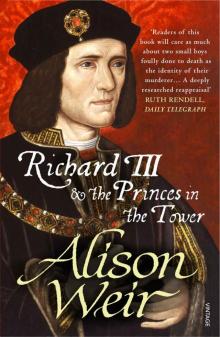 Richard III and the Princes in the Tower
Richard III and the Princes in the Tower Britain's Royal Families: The Complete Genealogy
Britain's Royal Families: The Complete Genealogy The Lady in the Tower: The Fall of Anne Boleyn
The Lady in the Tower: The Fall of Anne Boleyn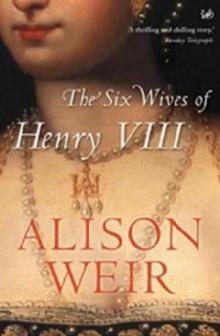 Six Wives of Henry VIII
Six Wives of Henry VIII Elizabeth of York: A Tudor Queen and Her World
Elizabeth of York: A Tudor Queen and Her World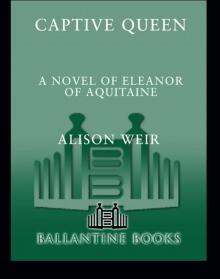 Captive Queen
Captive Queen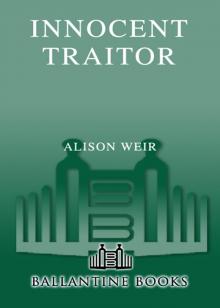 Innocent Traitor
Innocent Traitor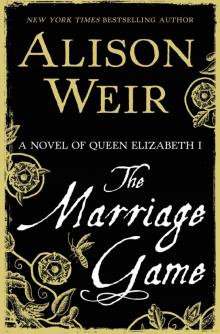 The Marriage Game
The Marriage Game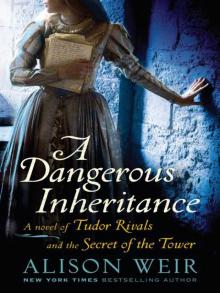 A Dangerous Inheritance
A Dangerous Inheritance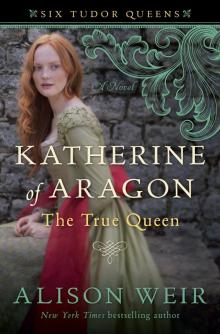 Katherine of Aragón: The True Queen
Katherine of Aragón: The True Queen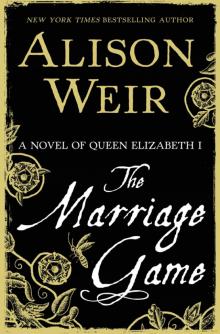 The Marriage Game: A Novel of Queen Elizabeth I
The Marriage Game: A Novel of Queen Elizabeth I Princes in the Tower
Princes in the Tower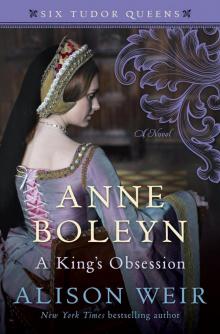 Anne Boleyn: A King's Obsession
Anne Boleyn: A King's Obsession Traitors of the Tower
Traitors of the Tower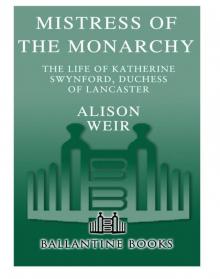 Mistress of the Monarchy: The Life of Katherine Swynford, Duchess of Lancaster
Mistress of the Monarchy: The Life of Katherine Swynford, Duchess of Lancaster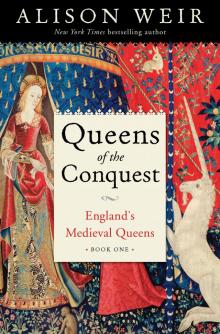 Queens of the Conquest: England’s Medieval Queens
Queens of the Conquest: England’s Medieval Queens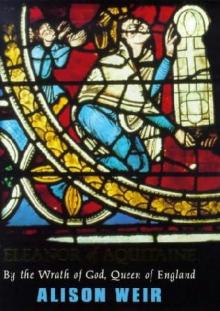 Eleanor of Aquitaine: A Life
Eleanor of Aquitaine: A Life Mary, Queen of Scots, and the Murder of Lord Darnley
Mary, Queen of Scots, and the Murder of Lord Darnley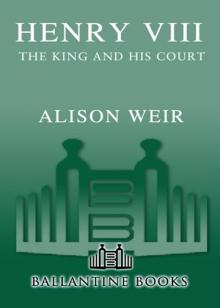 Henry VIII: The King and His Court
Henry VIII: The King and His Court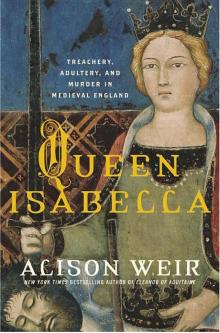 Queen Isabella: Treachery, Adultery, and Murder in Medieval England
Queen Isabella: Treachery, Adultery, and Murder in Medieval England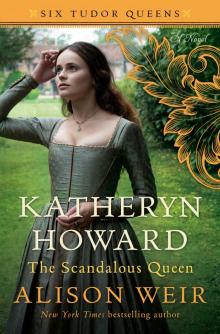 Katheryn Howard, the Scandalous Queen
Katheryn Howard, the Scandalous Queen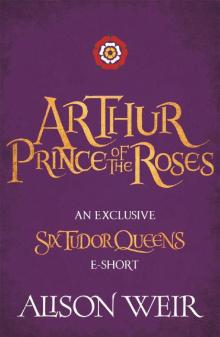 Arthur- Prince of the Roses
Arthur- Prince of the Roses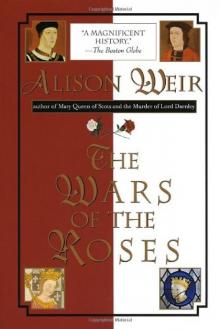 The Wars of the Roses
The Wars of the Roses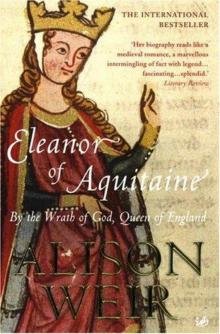 Eleanor of Aquitaine: By the Wrath of God, Queen of England
Eleanor of Aquitaine: By the Wrath of God, Queen of England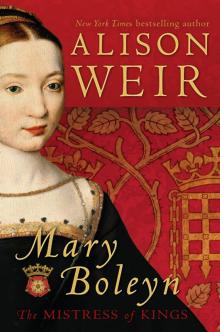 Mary Boleyn: The Great and Infamous Whore
Mary Boleyn: The Great and Infamous Whore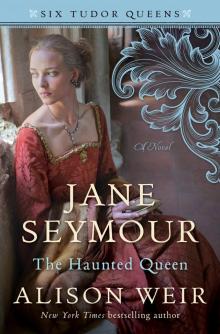 Jane Seymour: The Haunted Queen
Jane Seymour: The Haunted Queen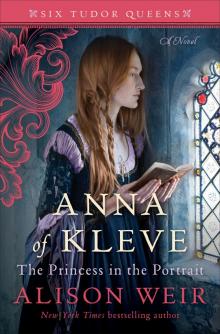 Anna of Kleve, the Princess in the Portrait
Anna of Kleve, the Princess in the Portrait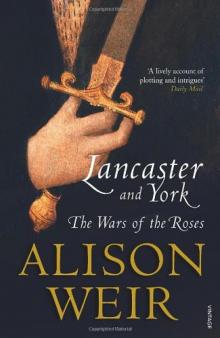 Lancaster and York: The Wars of the Roses
Lancaster and York: The Wars of the Roses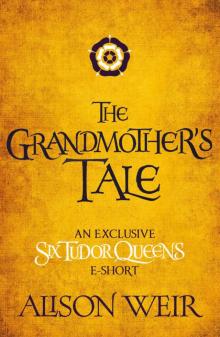 The Grandmother's Tale
The Grandmother's Tale The Princess of Scotland (Six Tudor Queens #5.5)
The Princess of Scotland (Six Tudor Queens #5.5)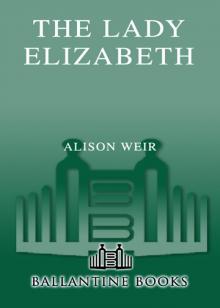 The Lady Elizabeth
The Lady Elizabeth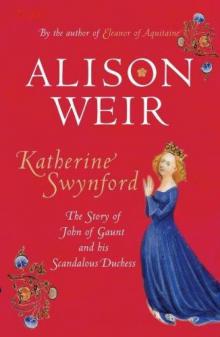 Katherine Swynford: The Story of John of Gaunt and His Scandalous Duchess
Katherine Swynford: The Story of John of Gaunt and His Scandalous Duchess The Curse of the Hungerfords
The Curse of the Hungerfords The Lost Tudor Princess: The Life of Lady Margaret Douglas
The Lost Tudor Princess: The Life of Lady Margaret Douglas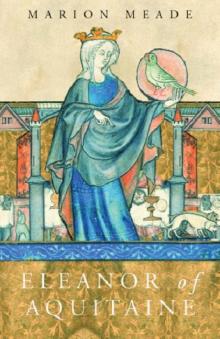 Eleanor of Aquitaine
Eleanor of Aquitaine Mistress of the Monarchy
Mistress of the Monarchy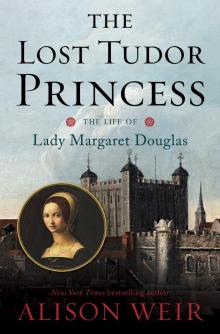 The Lost Tudor Princess
The Lost Tudor Princess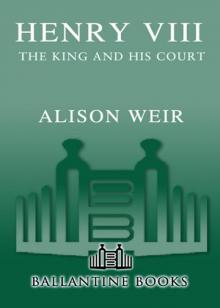 Henry VIII
Henry VIII Anne Boleyn, a King's Obsession
Anne Boleyn, a King's Obsession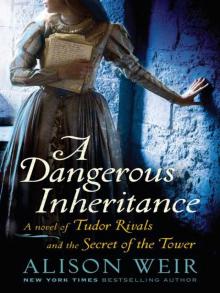 A Dangerous Inheritance: A Novel of Tudor Rivals and the Secret of the Tower
A Dangerous Inheritance: A Novel of Tudor Rivals and the Secret of the Tower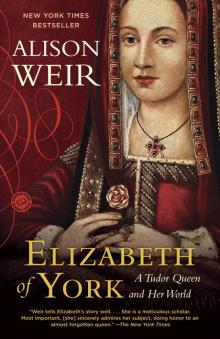 Elizabeth of York
Elizabeth of York Katherine of Aragon, the True Queen
Katherine of Aragon, the True Queen Katherine Swynford
Katherine Swynford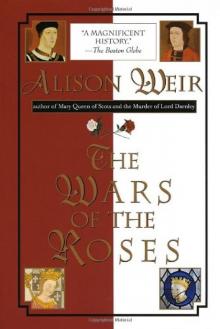 Wars of the Roses
Wars of the Roses Queens of the Conquest
Queens of the Conquest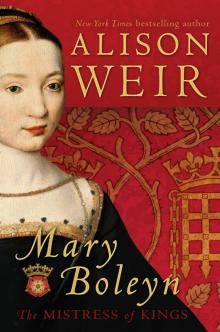 Mary Boleyn
Mary Boleyn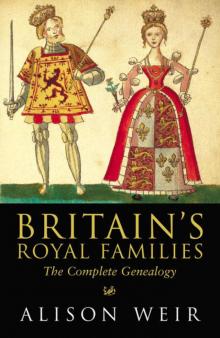 Britain's Royal Families
Britain's Royal Families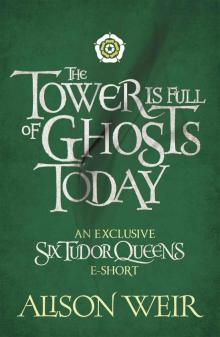 The Tower Is Full of Ghosts Today
The Tower Is Full of Ghosts Today Life of Elizabeth I
Life of Elizabeth I Anne Boleyn A King's Obssession
Anne Boleyn A King's Obssession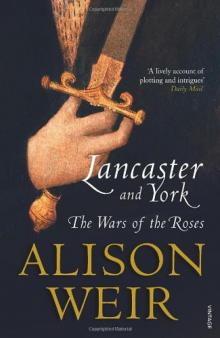 Lancaster and York
Lancaster and York Jane Seymour, the Haunted Queen
Jane Seymour, the Haunted Queen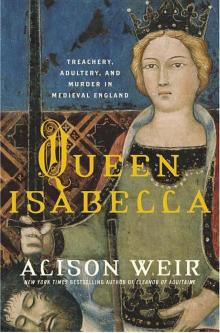 Queen Isabella
Queen Isabella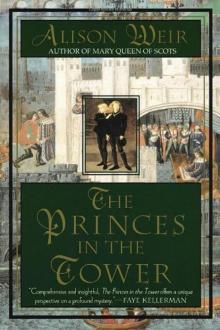 The princes in the tower
The princes in the tower